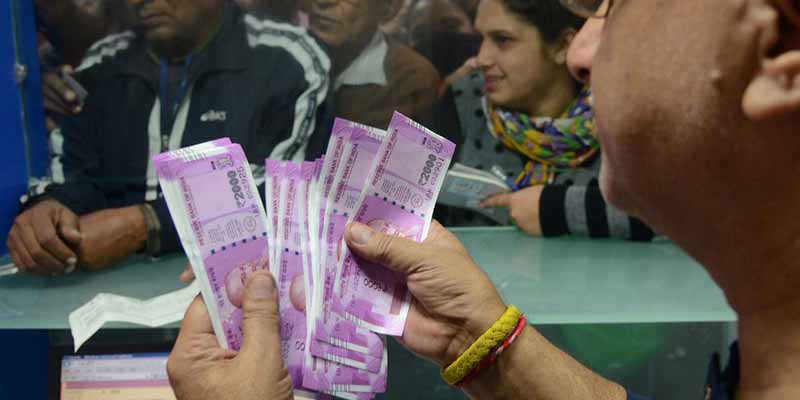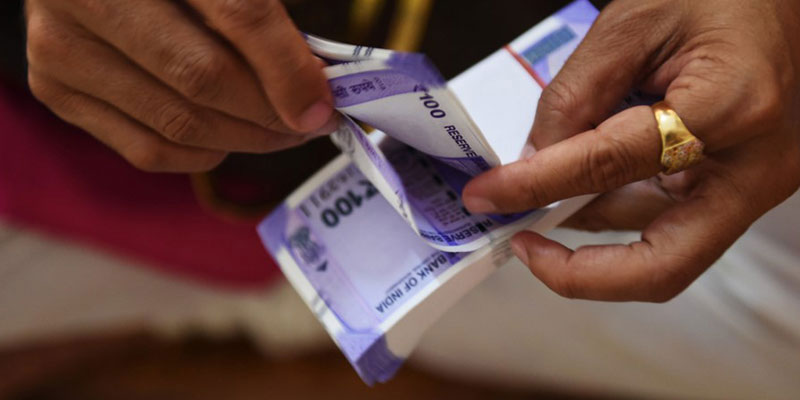- India
- May 20
Explainer - RBI’s role in issuance of currency and its management
• The Reserve Bank of India (RBI) announced withdrawal of Rs 2,000 currency notes from circulation.
• The Rs 2,000 banknote will continue to maintain its legal tender status. The public can continue to use Rs 2,000 banknotes for their transactions and also receive them in payment.
• The RBI has asked the public to deposit or exchange these banknotes on or before September 30, 2023.
• The public can approach bank branches for deposit or exchange of Rs 2,000 banknotes held by them. The exchange facility shall be provided free of cost.
Why are Rs 2,000 denomination banknotes being withdrawn?
• The Rs 2,000 denomination banknote was introduced in November 2016 under Section 24(1) of RBI Act, 1934 primarily with the objective to meet the currency requirement of the economy in an expeditious manner after withdrawal of the legal tender status of all Rs 500 and Rs 1,000 banknotes in circulation at that time.
• With fulfilment of that objective and availability of banknotes in other denominations in adequate quantities, printing of Rs 2,000 banknotes was stopped in 2018-19. About 89 per cent of the Rs 2,000 denomination notes were issued prior to March 2017 and are at the end of their estimated life-span of 4-5 years.
• The total value of these banknotes in circulation has declined from Rs 6.73 lakh crore at its peak as on March 31, 2018 (37.3 per cent of notes in circulation) to Rs 3.62 lakh crore, constituting only 10.8 per cent of notes in circulation on March 31, 2023.
• It has also been observed that this denomination is not commonly used for transactions.
• In view of the above, and in pursuance of the “Clean Note Policy” of the RBI, it has been decided to withdraw the Rs 2,000 denomination banknotes from circulation.
• Clean Note Policy is adopted by RBI to ensure availability of good quality banknotes to the members of public.
Issuer of currency
• RBI plays a unique role in the matter of monetary policy and issuance of currency.
• The RBI Act has been enacted to regulate the issue of bank notes and generally to operate the currency and credit system of the country.
• Section 3 of the RBI Act provides that the RBI has been constituted for the purposes of taking over the management of the currency from the central government and carrying on the business of banking in accordance with the provisions of the RBI Act.
• Section 22(1) of the RBI Act provides that the RBI shall have the sole right to issue bank notes in India.
• The Indian currency is called the Indian Rupee (INR). The symbol of the Indian Rupee is ₹. The design resembles both the Devanagari letter ‘₹’ (ra) and the Latin capital letter ‘R’, with a double horizontal line at the top.
Currency management
• The banknote printing started in India in 1928 with the establishment of India Security Press in Nashik. Until the commissioning of the Nashik press, the currency notes were printed from Thomas De La Rue Giori of the United Kingdom.
• The second banknote printing press was established in Dewas (Madhya Pradesh) in 1975.
• With the growth in population and economic activity, the demand for banknotes has been steadily increasing. To bridge the demand and supply gap, the government decided to establish two banknote printing presses, one at Mysuru and the other at Salboni (West Bengal).
• The Reserve Bank has the sole authority to issue banknotes in India. The Reserve Bank, like other central banks the world over, changes the design of banknotes from time to time.
• Currency in Circulation (CiC) includes banknotes and coins.
• The Department of Currency Management has the responsibility of administering the functions of currency management, a core function of the Reserve Bank in terms of the Reserve Bank of India Act, 1934.
• Currency management essentially relates to issue of notes and coins and retrieval of unfit notes from circulation.
• This work is performed through 18 issue offices of the Reserve Bank and a wide network of currency chests, repositories and small coin depots managed by banks and government treasuries.
• The Department receives notes from four currency note printing presses.
• The value and volume of banknotes in circulation increased by 9.9 per cent and 5 per cent, respectively, during 2021-22 as compared with 16.8 per cent and 7.2 per cent, respectively, during 2020-21.
• In value terms, the share of Rs 500 and Rs 2,000 banknotes together accounted for 87.1 per cent of the total value of banknotes in circulation as on March 31, 2022, as against 85.7 per cent as on March 31, 2021.
• In volume terms, Rs 500 denomination constituted the highest share at 34.9 per cent, followed by Rs 10 denomination banknotes, which constituted 21.3 per cent of the total banknotes in circulation as on March 31, 2022.
• The total value of coins in circulation increased by 4.1 per cent in 2021-22, while the total volume increased by 1.3 per cent during the same period. As on March 31, 2022, coins of Re 1, Rs 2 and Rs 5 together constituted 83.5 per cent of the total volume of coins in circulation.
Printing of notes
• Banknotes are printed at four currency presses, two of which are owned by the government through Security Printing and Minting Corporation of India Ltd. (SPMCIL) and two are owned by the Reserve Bank, through its wholly owned subsidiary Bharatiya Reserve Bank Note Mudran Private Ltd. (BRBNMPL).
• The currency presses of SPMCIL are Bank Note Press (BNP) in Dewas and Currency Note Press (CNP) in Nashik.
• The two presses of BRBNMPL are at Mysuru and Salboni.
• Coins are minted in four mints owned by the government. The mints are located at Mumbai, Hyderabad, Calcutta and Noida.
• The coins are issued for circulation only through the Reserve Bank in terms of Section 38 of the RBI Act.
Manorama Yearbook app is now available on Google Play Store and iOS App Store




